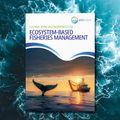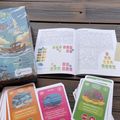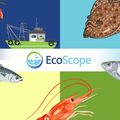EU Research Centre's New Guidelines Chart the Course for EcoScope's Progress in Model-Driven Policymaking
The European Commission’s Joint Research Centre (JRC) has published a short guideline document on" Using models for policymaking – The questions you should ask when presented with the use of simulation models in policymaking”, which it recently launched with a webinar on June 19.
“This is relevant for EcoScope because our models are mainly tailored to be used in decision making and by policy makers,” commented Ana Rodriguez Perez, Science Officer at the European Marine Board and EcoScope partner. “Many of the points raised in the guidelines and questions that should be asked are relevant for the models developed in EcoScope,” she added. The EU-funded EcoScope project aims to promote an efficient implementation of ecosystem-based fisheries management. The project will develop several tools, including ecosystem models for seven European sea regions, to advice on the likely ecological, social and economic consequences of different fisheries management options. These tools will be available through a single public portal and can be used by scientific advisory bodies and decision makers.
In its introduction, the document affirms that “policy decisions must be transparently informed by evidence. Simulation models are increasingly used for supporting the policymaking process and analysing the impact of policy options in areas such as pandemic response, climate change and healthcare. So, ensuring models are open to scrutiny by policymakers, researchers and the public is essential to creating public trust.”
“To understand, use and communicate model results, models need to be transparent and open to scrutiny. The more important the policy question is, the more impact the use of model results may have on society. The increased weight placed on model results means scrutiny is required now more than ever,” the document’s authors continue.
Transparency of a model is achieved by engaging with the relevant stakeholders and coming to agreement on the model’s assumptions, strengths and limits, as well as continually validating old and new model outputs and regularly reviewing the model’s data, they added.
The guideline’s thirty-one questions help ascertain whether a given model is in fact the right tool for answering the policy question at hand, in terms of its defined purpose and scope, and help interpret the results correctly.

Questions in the guidelines focus on determining what is known about the model, the origin, history and quality of the data, identifying biases, limits and gaps, as well as identifying and characterising relevant relationships, assumptions and uncertainties within the model, and aspects related to the model’s overall transparency, reliability, clarity, relevance and transferability.
The questions were developed by the European Commission Competence Centre on Modelling and Decision Analysis (CC-MOD) together with Sense about Science EU, and first presented at the 2021 EU Conference on Modelling Support. The document’s authors note that the questions were co-created with policymakers and civil society professionals to make sure the guide is user-friendly and easy to understand and implement, enabling policymakers and stakeholders at large to assess the use of models in different contexts.





